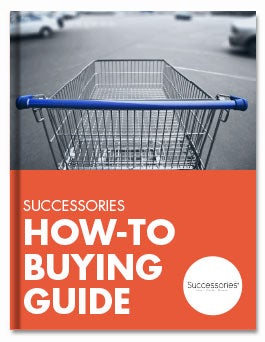How to Hire
How to hire people with good attitudes
Too much pain comes from hiring someone whose attitude goes bad over time ... leadership pain, team pain, customer pain. It doesn't start bad because we wouldn't hire them. (Right?!)
How does it happen?
Maybe we're a little lazy at some point during the interview process. We rush it or we're inattentive at important moments while we're learning about them.
Maybe we miss the lack of a needed skill or we don't catch a potential attitude glitch. They might be temperamental in difficult moments and drain teammates. Maybe they don't have much of a sense of urgency or a desire to continually pushing for better. Too much ego starts showing up and they become uncoachable.
Or, as time goes on, we might not do a good and consistent job of a helping a solid person grow. We forget to Lead Simply ... another extremely important issue on its own.
But the front end of all of it starts by getting to know someone before you really have a chance to work with them. Two weeks into it ... four weeks into it you'll see much more truth in action. During the recruiting process, things tend to be a little more polished.
1 simple idea to better your chances of identifying someone who's positive and service-oriented...
Use the Smile & Move book in your interview process.
For many organizations, it illustrates the important attitude qualities they're looking for. You could use anything (another book, article, video), but make it something that requires less than an hour of your candidate's time (or whatever time you feel is a reasonable request of someone who's not yet committed to you and your organization). Smile & Move takes about 20 minutes to read.
See below for the process and questions we recommend. If you use something other than Smile & Move, you can still use the approach. Just plug in your content of choice.
After the first interview...
If you feel like you'll talk with the person a second time, give them (or send them) a copy of Smile & Move and ask them to read it before your next conversation. Because it's no more than a 20-minute-read, it shouldn't be a problem for your next superstar.
I enjoyed talking with you today. I'd like to talk again and also have you meet/talk with some other people. Is the opportunity still something you're interested in?”
If yes, set up a time or agree that you'll follow up to set up a time and then (if interviewing remotely)...
I'm going to send you a short book we enjoy here. It's called Smile & Move. Quick read. 20 minutes at most. Do me a favor and read it before we talk again and we'll discuss it a little."
If interviewing in person...
Here's a book we enjoy here. It's called Smile & Move. Quick read. 20 minutes at most. Do me a favor and read it before we meet again and we'll discuss it a little when you come back”
Now, pay attention to the response.
Is the person excited, indifferent, or put off? It's probably an unusual request, so expecting excitement might be a little unreasonable. You're just looking for someone who might be put off by the request for the additional work. It's probably not going to be the case because if you're asking the person yo talk again, you've got a good feeling about him/her. It's just an added interaction to give you more information for your ultimate decision. Also, it gives your candidate more information about your expectations (and since you're a Smover ... someone who Smiles & Moves ... your expectations are high).
If they're put off by it, maybe they'll decide not to continue with the interview process and save everyone time. If they want the book, let them keep it. Maybe you'll have influenced something positive in their lives ... even if it takes them a year or two to realize it somewhere else. (Kind of you to be a better part of someone's career. Good karma!)
At the next interview...
Ask your candidate a few questions about his/her thoughts on the book and then listen (no leading, no prompting, no interrupting). Be the Smover you hope they'll be and listen with both your ears and eyes (from Chapter 1, Being Awake). Be sure to remember the "gap of silence" idea as you listen*.
- What did you think of the book?
- What stood out for you?
- With which point do you think you have the biggest challenge?
- With which principle do you feel strongest?
- What's an example of when you last [insert strength point they gave]?
- What's an example of when you [insert your favorite Smovish principle]?
- What did you disagree with? Why?
Hopefully, you'll have an engaged person in front of you and won't need to ask the reasons for their answers. They'll simply expand on their own (a good sign). If not, you can always follow with "Why?"
Again ... listen without prompting, leading, or interrupting. You'll learn so much more about the person (which is what you want because you're deciding on something that could be very important to the future of your organization ... the one hire that made all the difference ... a future leader in the company ... maybe even the future president... and you're the one who started it all ... not bad, Smover).
You're looking for truth.
One way to prompt it is to share with your candidate where you're challenged in Smoving and give a quick example. (See below.)
Quick. Inspiring. Real. Smile & Move. Get the book.
Opening up to them might help them feel more comfortable opening up with you.
My toughest challenge is being approachable. Maybe having more of a sense of urgency, too. Sometimes I don't remember that people are just as busy as me and I need to make sure I act with that in mind.”
f you don't like all of your candidate's answers, it doesn't mean s/he might not be a strong hire (perhaps s/he's coachable**). Again, it just gives you more information about the person's emotional development and attitude toward work.
Remember ... hiring someone who's not a match has a negative impact on everyone. You want someone who's positive and service-oriented internally (with their colleagues) and externally (with those you serve). You want a Smover ... someone whoSmile & Move.
- Don't rush the process.
- Stay objective (don't fall in love or wish someone in).
- Stay attentive during discussions.
A more enjoyable day ... for everyone. That's the goal.
Interview Tip: Embrace the Silence
To make better connections with people (and learn much more) when you're talking with them, be sure to allow a small gap of silence between what they say ... and your response. This will give them an opportunity to share more and help them know you're really listening. (Remember: a breath doesn't always indicate the end of a sentence or thought.)
** Coachable
If you want someone who's coachable, make sure at some point you ask them if they feel they're coachable ... point blank.
Almost everyone will say they are.
If that's what you're looking for (you are, right?), be sure to let them know it's an important quality of being a member of your organization, group, or team. Someone who's not coachable can make things difficult on everyone.
If you want to take it a step further and you've noticed something during the interview that you can coach them on (something small because you likely don't have much of a relationship yet), give them your thought and see how it's received. "For example, I've noticed you tend to interrupt/say the word 'like' frequently/seem distracted." (More thoughts and a 6-point check on coachability here.)
hire, grow, let go
I'm lucky. I have 3 different routes into work that each take about 20 minutes to travel.
It makes the morning drive a little more interesting.
Each route has a Starbucks I occasionally like to order from on the way in. I'm a fan of their spinach feta wrap for breakfast (and so many other things about them).
Before they started taking mobile orders, I used to call as I was leaving my house and ask them to have it ready for me when I got there.
The people at two of the three locations did it happily, but one location would consistently tell me, “We don't take phone orders.” After trying a few times, I just decided not to order from Starbucks on the days I took that particular route. (They were always a little slower there too.)
Then the app came out (a wonderful thing!) and like everywhere else, mobile ordering became a standard for Starbucks. So, I decided I'd give my less than Smovish Starbucks another try.
On my first visit, I learned that particular team likes to keep the mobile orders behind the counter (unlike the other two busy stores). This forces an interaction that can add waiting time and be disruptive to other customers.
I asked them why they didn't put the orders out for easy customer access. They seemed annoyed and told me something like, “We want to be sure everyone gets the right thing.”
I let it go because I figured mobile ordering was new to them. They'd eventually see the value in giving mobile customers immediate access to their food and drinks.
Starbucks mobile order pick-up board
No luck.
On the next visit, after waiting for them to recognize I was standing there hoping to get my order from behind the counter, I recommended putting out a small basket for food orders like I'd seen in another store ... or just making a nice designated area that was easy for customers to grab and go (like the image to the left from an actual store).
Now they really didn't like me. At that point, it was clear they wanted me out of the store. It was uncomfortable for everyone.
I enjoy Starbucks and continue to buy from them ... just not at that location.
The experience had me thinking about the reason this particular store might be different from the others (just like I often wonder why some flight attendants are wonderful and some aren't) ... and the reason any organization might allow itself to have a team of people who does anything other than try to make a better experience for the customer (to make good things happen for other people).
See below for my conclusion (don't miss it if you lead people ... or hope to one day).
Model. Connect. Involve. 3 Points to Better Leadership. Get the book.
My conclusion...
It's always the leader.
We try to hire the right people. We do our best to develop and grow those people (by Leading Simply). And if it doesn't work out, we need to let them go.
Why wouldn't it work out?
We might make a hiring mistake to begin with by rushing the process or being inattentive at certain moments while we're learning about them. Maybe we miss a lack of needed skills or we don't catch an attitude glitch (they're temperamental in difficult moments and drain teammates, they lack a sense of urgency, they don't push for better, too much ego, etc.).
Or, we might not do a good and consistent job of a helping a solid person grow. Maybe they don't want to accept the development (they're uncoachable, their attitude sours over time).
Hire. Grow. Or, let go.
A lot of fun and challenging details inside those three points (many small things that can make a big difference) but when it comes to the people side of things at work, that's the big-picture summary to a more enjoyable day for everyone.
Remember ... it's always the leader. (Really.)































